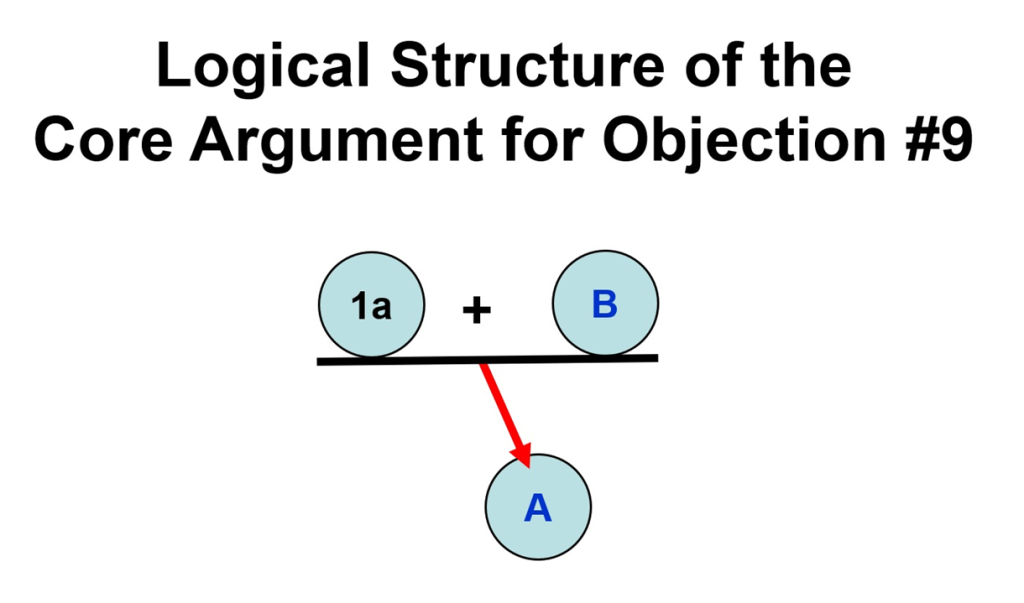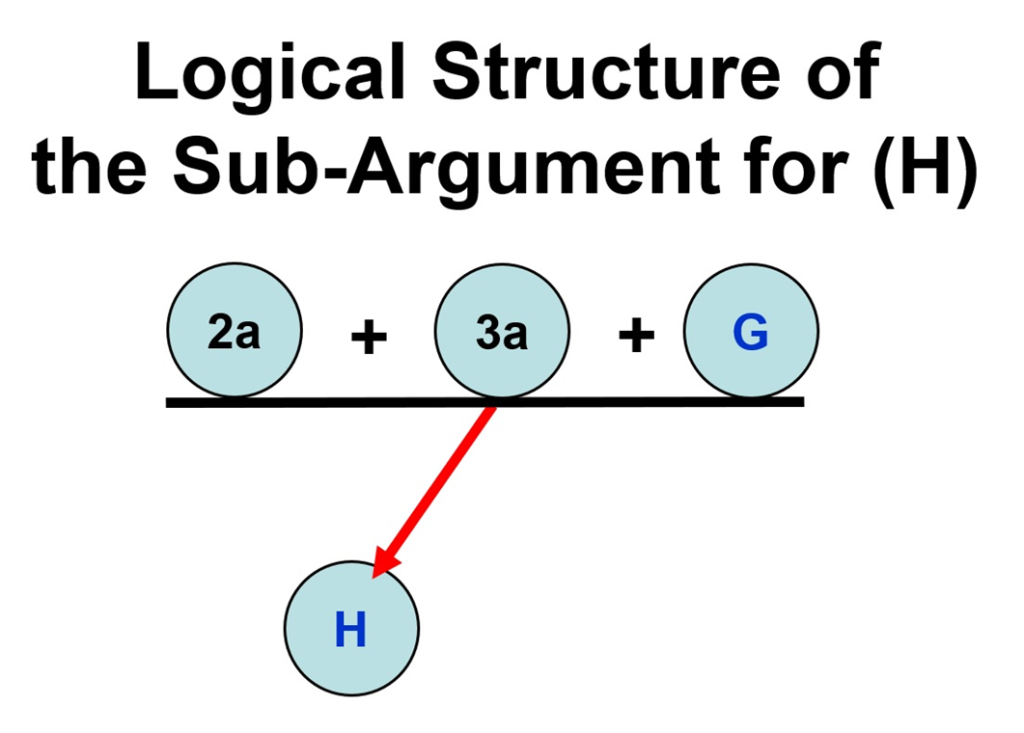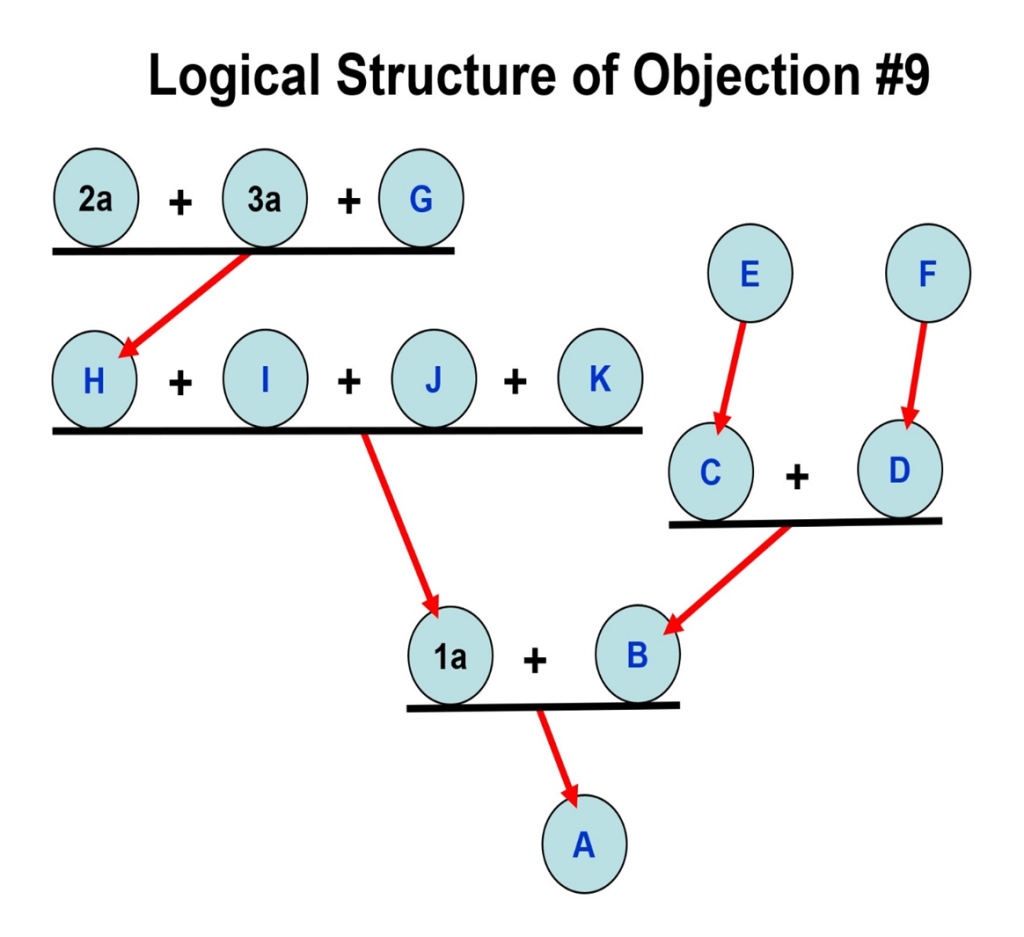Careful Analysis of Objections to the Swoon Theory: Objection #9 (Swoon Theory Implies False Theories)
WHERE WE ARE
Careful argument evaluation is the heart and soul of critical thinking. But in order to do a careful evaluation of an argument, one must first have a clear understanding of the argument that is to be evaluated. Careful argument analysis is usually required in order to obtain a clear understanding of an argument, so having the knowledge, skills, and desire to do careful argument analysis is crucial to being a critical thinker.
I have carefully evaluated nine objections against the Swoon Theory, objections put forward by Peter Kreeft and Ronald Tacelli in Chapter 8 of their Handbook of Christian Apologetics. I arrived at the conclusion that all nine objections FAIL, and thus that their case against the Swoon Theory FAILS, and their case for the resurrection of Jesus FAILS. But in order to be in a position to do this, I had to first do a careful argument analysis of each objection (each objection constitutes an argument against the Swoon Theory).
In this post I will walk through my process of careful argument analysis, step-by-step, showing how the sausage gets made. The process of careful argument analysis that I use here can be applied to almost any text or speech that contains an argument or arguments. This post will focus on Objection #9 against the Swoon Theory.
ANALYSIS OF OBJECTION #9
Objection #9 is the last of three objections that are based on a Gospel other than the Gospel of John (or in addition to the Gospel of John):

OBJECTION #9: SWOON THEORY IMPLIES FALSE THEORIES
Kreeft and Tacelli’s presentation of Objection #9 argues that the Swoon Theory is false because it implies other theories that are false:
Most simply, the swoon theory necessarily turns into the conspiracy theory or the hallucination theory, for the disciples testified that Jesus did not swoon but really died and really rose.
(HCA, p.184)
IDENTIFICATION STEPS
Most simply, – an unnecessary comment
1. [the swoon theory necessarily turns into the conspiracy theory or the hallucination theory,]
for – an inference indicator that indicates the next statement or statements are reasons that support the previous claim. Claim (2) and claim (3) are reasons in support of claim (1).
2. [the disciples testified that Jesus did not swoon]
3. [the disciples testified that Jesus…really died and really rose.]
CLARIFICATION STEPS
1. [the swoon theory necessarily turns into the conspiracy theory or the hallucination theory,]
1a. IF the Swoon Theory is true, THEN either (a) the Conspiracy Theory is true or (b) the Hallucination Theory is true.
2. [the disciples testified that Jesus did not swoon]
2a. The eleven remaining disciples of Jesus testified that Jesus did not faint while Jesus was on the cross.
3. [the disciples testified that Jesus…really died and really rose.]
3a. The eleven remaining disciples of Jesus testified that Jesus really died while he was on the cross and that Jesus really came back to life sometime after he was taken down from the cross.
FILL-IN STEPS
Kreeft and Tacelli fail to state the conclusion of this argument:
A. The Swoon Theory is FALSE.
From claim (1a), we can infer the conclusion (A) by modus tollens, if we add the following unstated claim:
B. It is NOT the case that either (a) the Conspiracy Theory is true or (b) the Hallucination Theory is true.
So this is the core argument of Objection #9:
1a. IF the Swoon Theory is true, THEN either (a) the Conspiracy Theory is true or (b) the Hallucination Theory is true.
B. It is NOT the case that either (a) the Conspiracy Theory is true or (b) the Hallucination Theory is true.
THEREFORE:
A. The Swoon Theory is FALSE.
We know that Kreeft and Tacelli argue that the Conspiracy Theory is false, and that the Hallucination Theory is also false, so we know how they would argue in support of claim (B):
C. It is NOT the case that the Conspiracy Theory is true.
D. It is NOT the case that the Hallucination Theory is true.
THEREFORE:
B. It is NOT the case that either (a) the Conspiracy Theory is true or (b) the Hallucination Theory is true.
Furthermore, we know how Kreeft and Tacelli would support claims (C) and (D):
E. Kreeft and Tacelli have refuted the Conspiracy Theory (in Chapter 8 of HCA).
F. Kreeft and Tacelli have refuted the Hallucination Theory (in Chapter 8 of HCA).
Claim (E) supports claim (C), and claim (F) supports claim (D).
Kreeft and Tacelli have provided a sub-argument for the key premise (1a):
2a. The eleven remaining disciples of Jesus testified that Jesus did not faint while Jesus was on the cross.
3a. The eleven remaining disciples of Jesus testified that Jesus really died while he was on the cross and that Jesus really came back to life sometime after he was taken down from the cross.
THEREFORE:
1a. IF the Swoon Theory is true, THEN either (a) the Conspiracy Theory is true or (b) the Hallucination Theory is true.
I have emphasized that one needs to develop a CLEAR UNDERSTANDING of an argument BEFORE attempting to evaluate the argument. However, in this case, some preliminary evaluation helps to analyze and CLARIFY this argument.
The argument presented in support of premise (1a) appears to be a BAD argument because it is UNCLEAR HOW claims (2a) and (3a) support claim (1a). There is a significant LOGICAL GAP between the premises and the conclusion here. This evident problem with the argument as presented should motivate us to try to figure out what Kreeft and Tacelli were thinking and to try to fill in the LOGICAL GAP they left between these premises and this sub-conclusion.
I think the key here is a dilemma that Kreeft and Tacelli mention on the page just before they begin to lay out their various objections against the Swoon Theory:
Theories 2 [i.e. the Hallucination Theory] and 4 [i.e. the Conspiracy Theory] constitute a dilemma: if Jesus didn’t rise, then the apostles, who taught that he did, were either deceived (if they thought he did) or deceivers (if they knew he didn’t).
(HCA, p.182)
Given this supposed dilemma between the “apostles” (i.e. the eleven remaining disciples of Jesus) being either deceived or deceivers, we can construct a line of reasoning that starts with claims (2a) and (3a) and that concludes with the key claim (1a):
2a. The eleven remaining disciples of Jesus testified that Jesus did not faint while Jesus was on the cross.
3a. The eleven remaining disciples of Jesus testified that Jesus really died while he was on the cross and that Jesus really came back to life sometime after he was taken down from the cross.
G. IF the Swoon Theory is true, THEN Jesus fainted while Jesus was on the cross, and Jesus did NOT die while he was on the cross, and Jesus did NOT come back to life sometime after he was taken down from the cross.
THEREFORE:
H. IF the Swoon Theory is true, THEN the eleven remaining disciples of Jesus testified to three false claims: that Jesus did NOT faint while he was on the cross, that Jesus really died while he was on the cross, and that Jesus came back to life sometime after he was taken down from the cross.
Based on claim (H), we can construct a line of reasoning that makes use of the alleged dilemma between the disciples being DECEIVED or being DECEIVERS about the resurrection of Jesus:
H. IF the Swoon Theory is true, THEN the eleven remaining disciples of Jesus testified to three false claims: that Jesus did NOT faint while he was on the cross, that Jesus really died while he was on the cross, and that Jesus came back to life sometime after he was taken down from the cross.
I. IF the eleven remaining disciples of Jesus testified to three false claims: that Jesus did NOT faint while he was on the cross, that Jesus really died while he was on the cross, and that Jesus came back to life sometime after he was taken down from the cross, THEN either (a) the eleven remaining disciples of Jesus were DECEIVERS who lied to others about the alleged resurrection of Jesus, or (b) the eleven remaining disciples of Jesus were themselves DECEIVED into sincerely but mistakenly believing that Jesus had risen from the dead.
J. IF the eleven remaining disciples of Jesus were DECEIVERS who lied to others about the alleged resurrection of Jesus, THEN the Conspiracy Theory is true.
K. IF the eleven remaining disciples of Jesus were themselves DECEIVED into sincerely but mistakenly believing that Jesus had risen from the dead, THEN the Hallucination Theory is true.
THEREFORE:
1a. IF the Swoon Theory is true, THEN either (a) the Conspiracy Theory is true or (b) the Hallucination Theory is true.
DIAGRAMMING THE ARGUMENT

1a. IF the Swoon Theory is true, THEN either (a) the Conspiracy Theory is true or (b) the Hallucination Theory is true.
B. It is NOT the case that either (a) the Conspiracy Theory is true or (b) the Hallucination Theory is true.
THEREFORE:
A. The Swoon Theory is FALSE.

C. It is NOT the case that the Conspiracy Theory is true.
D. It is NOT the case that the Hallucination Theory is true.
THEREFORE:
B. It is NOT the case that either (a) the Conspiracy Theory is true or (b) the Hallucination Theory is true.
SUB-ARGUMENTS FOR PREMISES (C) AND (D)
E. Kreeft and Tacelli have refuted the Conspiracy Theory (in Chapter 8 of HCA).
THEREFORE:
C. It is NOT the case that the Conspiracy Theory is true.
============
F. Kreeft and Tacelli have refuted the Hallucination Theory (in Chapter 8 of HCA).
THEREFORE:
D. It is NOT the case that the Hallucination Theory is true.

H. IF the Swoon Theory is true, THEN the eleven remaining disciples of Jesus testified to three false claims: that Jesus did NOT faint while he was on the cross, that Jesus really died while he was on the cross, and that Jesus came back to life sometime after he was taken down from the cross.
I. IF the eleven remaining disciples of Jesus testified to three false claims: that Jesus did NOT faint while he was on the cross, that Jesus really died while he was on the cross, and that Jesus came back to life sometime after he was taken down from the cross, THEN either (a) the eleven remaining disciples of Jesus were DECEIVERS who lied to others about the alleged resurrection of Jesus, or (b) the eleven remaining disciples of Jesus were themselves DECEIVED into sincerely but mistakenly believing that Jesus had risen from the dead.
J. IF the eleven remaining disciples of Jesus were DECEIVERS who lied to others about the alleged resurrection of Jesus, THEN the Conspiracy Theory is true.
K. IF the eleven remaining disciples of Jesus were themselves DECEIVED into sincerely but mistakenly believing that Jesus had risen from the dead, THEN the Hallucination Theory is true.
THEREFORE:
1a. IF the Swoon Theory is true, THEN either (a) the Conspiracy Theory is true or (b) the Hallucination Theory is true.

2a. The eleven remaining disciples of Jesus testified that Jesus did not faint while Jesus was on the cross.
3a. The eleven remaining disciples of Jesus testified that Jesus really died while he was on the cross and that Jesus really came back to life sometime after he was taken down from the cross.
G. IF the Swoon Theory is true, THEN Jesus fainted while Jesus was on the cross, and Jesus did NOT die while he was on the cross, and Jesus did NOT come back to life sometime after he was taken down from the cross.
THEREFORE:
H. IF the Swoon Theory is true, THEN the eleven remaining disciples of Jesus testified to three false claims: that Jesus did NOT faint while he was on the cross, that Jesus really died while he was on the cross, and that Jesus came back to life sometime after he was taken down from the cross.

THE STATED PREMISES OF OBJECTION #9
1a. IF the Swoon Theory is true, THEN either (a) the Conspiracy Theory is true or (b) the Hallucination Theory is true.
2a. The eleven remaining disciples of Jesus testified that Jesus did not faint while Jesus was on the cross.
3a. The eleven remaining disciples of Jesus testified that Jesus really died while he was on the cross and that Jesus really came back to life sometime after he was taken down from the cross.
THE UNSTATED ASSUMPTIONS/PREMISES OF OBJECTION #9
A. The Swoon Theory is FALSE.
B. It is NOT the case that either (a) the Conspiracy Theory is true or (b) the Hallucination Theory is true.
C. It is NOT the case that the Conspiracy Theory is true.
D. It is NOT the case that the Hallucination Theory is true.
E. Kreeft and Tacelli have refuted the Conspiracy Theory (in Chapter 8 of HCA).
F. Kreeft and Tacelli have refuted the Hallucination Theory (in Chapter 8 of HCA).
G. IF the Swoon Theory is true, THEN Jesus fainted while Jesus was on the cross, and Jesus did NOT die while he was on the cross, and Jesus did NOT come back to life sometime after he was taken down from the cross.
H. IF the Swoon Theory is true, THEN the eleven remaining disciples of Jesus testified to three false claims: that Jesus did NOT faint while he was on the cross, that Jesus really died while he was on the cross, and that Jesus came back to life sometime after he was taken down from the cross.
I. IF the eleven remaining disciples of Jesus testified to three false claims: that Jesus did NOT faint while he was on the cross, that Jesus really died while he was on the cross, and that Jesus came back to life sometime after he was taken down from the cross, THEN either (a) the eleven remaining disciples of Jesus were DECEIVERS who lied to others about the alleged resurrection of Jesus, or (b) the eleven remaining disciples of Jesus were themselves DECEIVED into sincerely but mistakenly believing that Jesus had risen from the dead.
J. IF the eleven remaining disciples of Jesus were DECEIVERS who lied to others about the alleged resurrection of Jesus, THEN the Conspiracy Theory is true.
K. IF the eleven remaining disciples of Jesus were themselves DECEIVED into sincerely but mistakenly believing that Jesus had risen from the dead, THEN the Hallucination Theory is true.
EVALUATION OF OBJECTION #9
For my careful evaluation of Objection #9 by Kreeft and Tacelli against the Swoon Theory, see these posts at The Secular Frontier:
